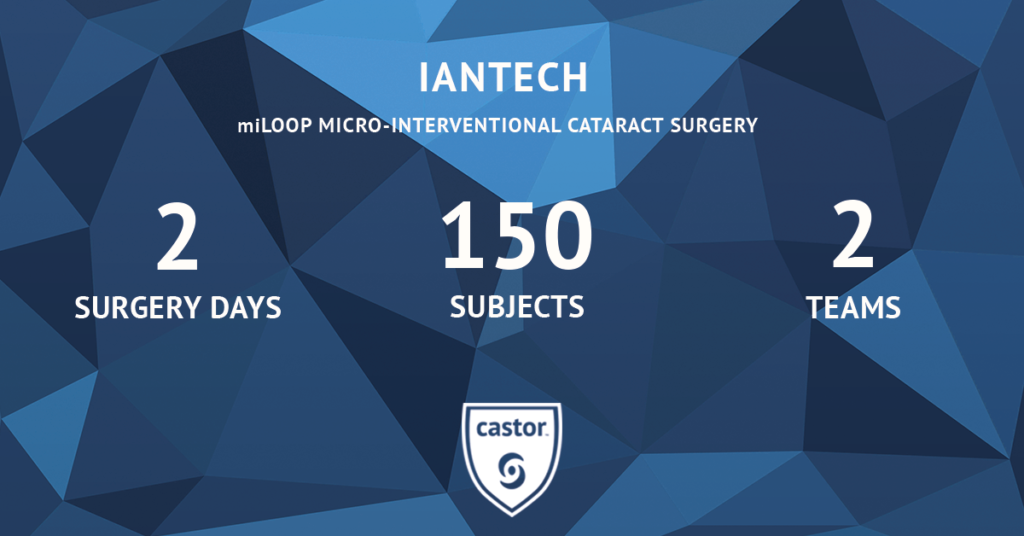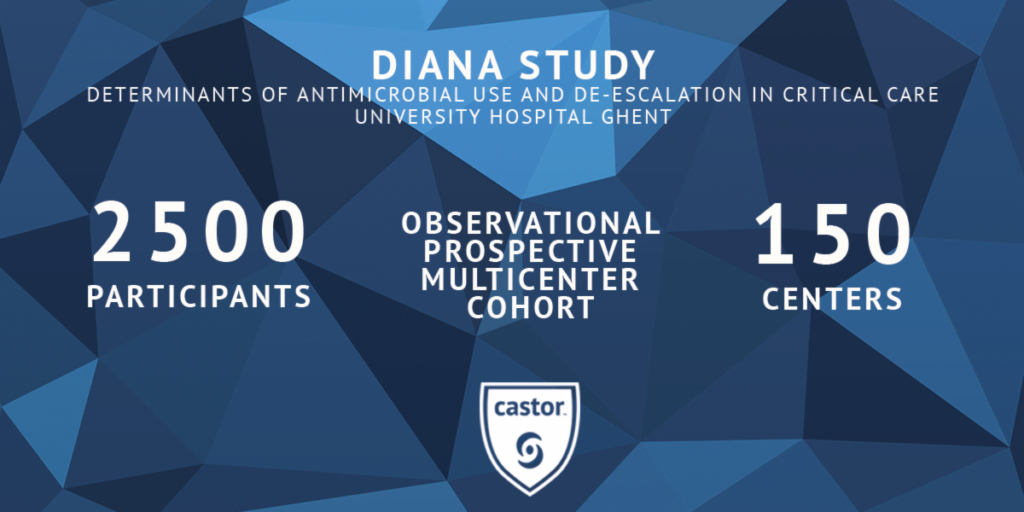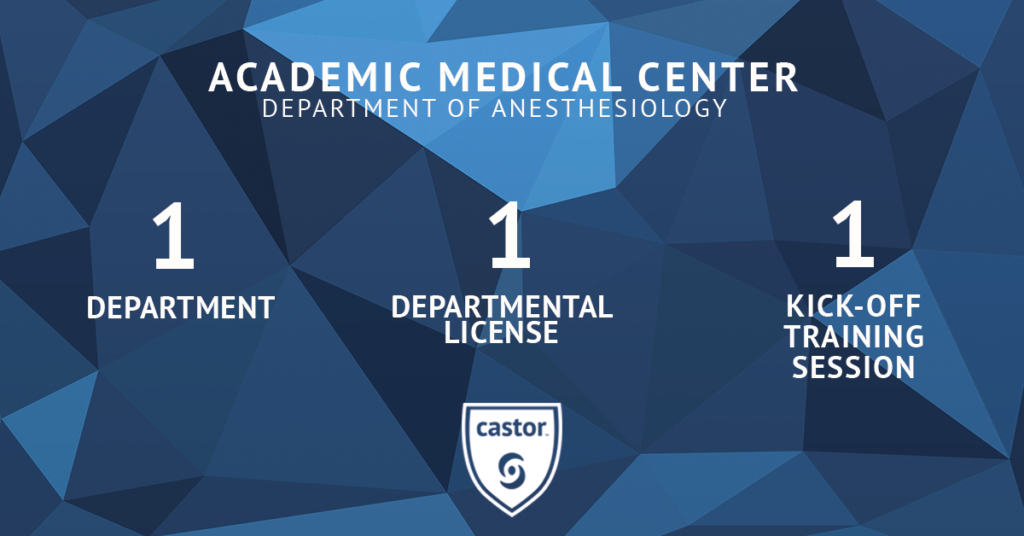Electronic data capture (EDC) systems have become important tools for academic, medical device, biotech and pharmaceutical research. If you are a medical researcher but aren’t yet familiar with the concept of electronic data capture, here is a guide to EDC, its use in clinical trials, and how it can greatly benefit your research.
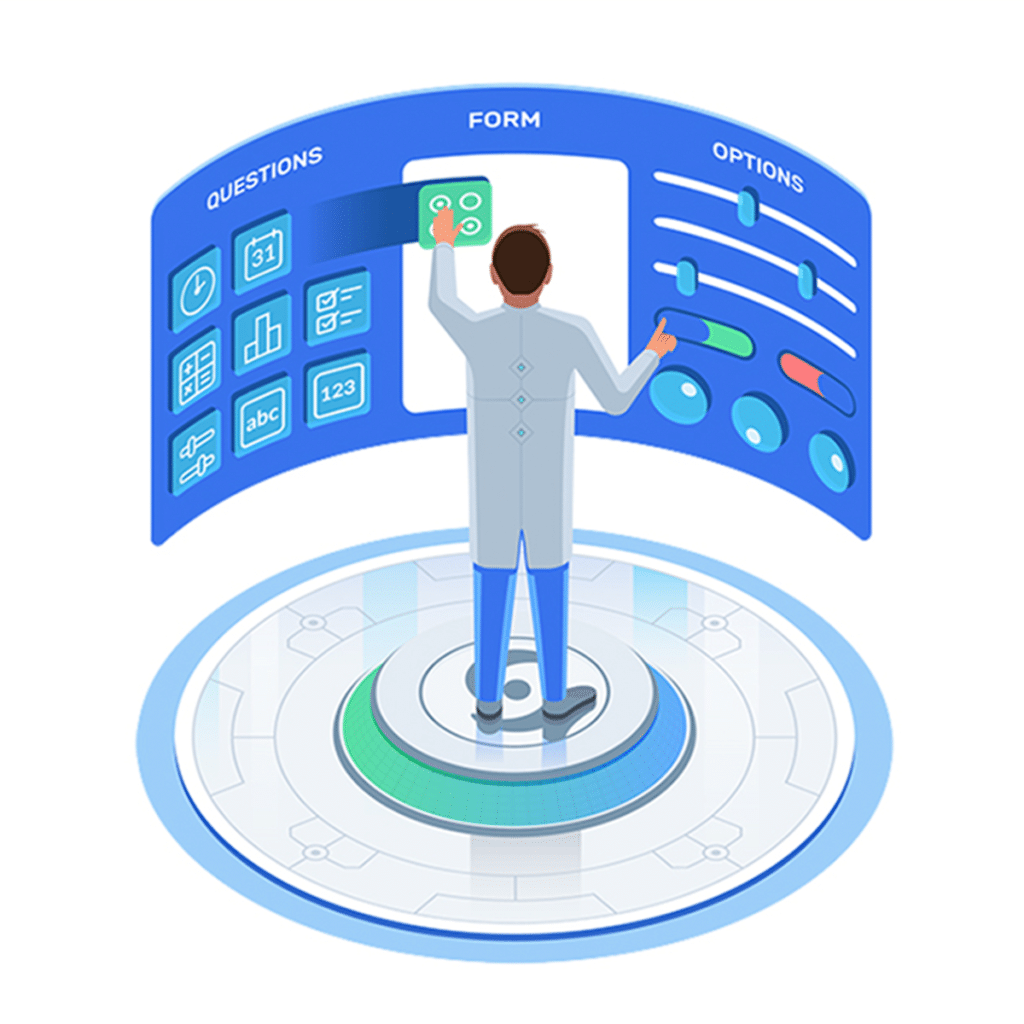
Let’s begin with a quick overview of EDC.
What is Electronic Data Capture?
In a nutshell, electronic data capture (EDC) is a system of capturing and managing clinical trial data on a digital platform to replace traditional paper-based data capture. Using such a system not only lets you capture data securely but also expedites the research process and ensures data reusability. Most EDC systems nowadays are cloud-based, ensuring secure access from anywhere.
When researchers conduct a clinical study, they collect information about their patients using Case Report Forms (CRFs). For example, a diabetes study with a demographics form and a lab result form.
CRFs are traditionally paper-based, and when the study is completed, the CRF documents are gathered and sent to the sponsor, who then transfers the data to a statistical analysis tool. Not only is this a lot of manual work, but also a LOT of paper, and in some cases this paper must be stored for 15 years!
However, by using an electronic data capture system, these Case Report Forms are filled out on a web-based platform, and the data is stored directly in a central database. This saves the hassle and risks of storing potentially sensitive data on paper, Excel, and other less secure and non-reusable methods. An electronic data capture system helps ensure compliance with medical data privacy, security, and Good Clinical Practice regulations. Furthermore, most professional EDC systems today provide automatic identification of data errors. This helps the Monitors to ensure the highest data quality. This process significantly improves the quality of the data and decreases the time needed for data review and corrections.
For example, Castor’s cloud-based EDC system enables researchers to easily capture high quality, reusable data. It is tailored specifically for use in academic, medical device, biotech, and pharmaceutical research, and compliant with patient data privacy laws and GCP.
So what features should you look for in an EDC and how does this work in practice? Read on to learn how 5 organizations benefited from using Castor EDC for their medical research.
What features should you look for in an EDC?
- A user-friendly interface, designed to meet the specific needs of medical researchers
- A user-access controlled platform that facilitates collaboration among multiple sites and researchers around the world
- The ability to set data limits for all captured data to reduce human error
- Assured compliance with privacy and data protection policies, ensuring that mandatory regulations are met and that research data is collected and maintained
- Seamless integration with existing tools, wearables, legacy systems, and other technology
- The ability to reuse research data for the initial research team, the statistical analysis team, and any future users of the data
- Access to proactive support and technical advisors to help set up your clinical trials
What are the benefits of using Electronic Data Capture?
Here’s how 5 organizations benefited from using an electronic data capture system for their medical research.
EDC benefit #1: Ease of set up
Setting up a complete clinical study in an EDC system can be relatively easy, depending on the system you choose. For example, Castor EDC’s user interface is designed to be intuitive and researcher-friendly. Castor’s online video training, monthly webinars, and prompt customer service make setting up your study very simple. For more complex studies, one of our clinical study experts can provide assistance.
Why Iantech Inc chose Castor to conduct their medical device randomized controlled trial.
Iantech Inc is a medical device company that performed a clinical study on a minimally invasive technique for the removal of cataracts. The study included 150 subjects and was concluded in only two surgery days. The Iantech team was impressed with how comprehensive and complete Castor EDC was for their company. Within a few days after the study protocol was finalized, they were able to use Castor and enable a fully operational research base and data set. All this at only a fraction of the cost of other systems offering similar functions.
EDC benefit #2: Easy & secure access
One of the main benefits of using a cloud-based EDC system is that it makes collaborating with researchers from across the world easy and more importantly, secure. It allows researchers to set up a study online and simply invite other collaborators via a web link. Collaborators can access the study with a single click and without any paper. In addition, the principal investigator (PI) can set different permissions depending on the collaborator’s role.
Why Ghent University Hospital used Castor to capture data from 150 centers across the world.
The DIANA Study is an international study on antibiotic use, initiated by Ghent University Hospital in Belgium. It includes a thorough 436 page CRF, incorporating data from 150 different centers across Europe, Asia, Australia, and the Americas. Without a cloud-based solution, such a global study would have been impossible.
“Without Castor EDC, we would never have been able to collect such a large amount of data across all centers with the limited amount of local funding they received. And a paper CRF of this length would certainly not have been manageable.”
– Dr. De Waele, Ghent University Hospital in Belgium
EDC benefit #3: Capture high-quality data
A major benefit of using an EDC system is that it allows researchers to add dependencies and validations to the research forms prior to data collection, significantly improving data quality. This ensures that the data collected is accurate, flagging errors or results falling out of predetermined parameters. For example, when collecting data on subjects’ blood pressure, the PI can set parameters ensuring that only realistic data can be added, significantly reducing the possibility of human error in data entry.
Why ClinFlows used a single electronic data capture system for all researchers to capture high-quality data.
INTRAGO II is a two-year global investigator-initiated study on the use of radiotherapy during brain tumor surgery. The study included data from centers in Germany, Australia, Canada, Peru, Spain, and the United States. The study needed to be accessed by all global participants and there was a limited budget for monitoring. For this reason, clinical services company ClinFlows carefully built multivariate validations and dependencies across their forms using Castor. This guaranteed data quality and significantly reduced the cost of data corrections after the study.
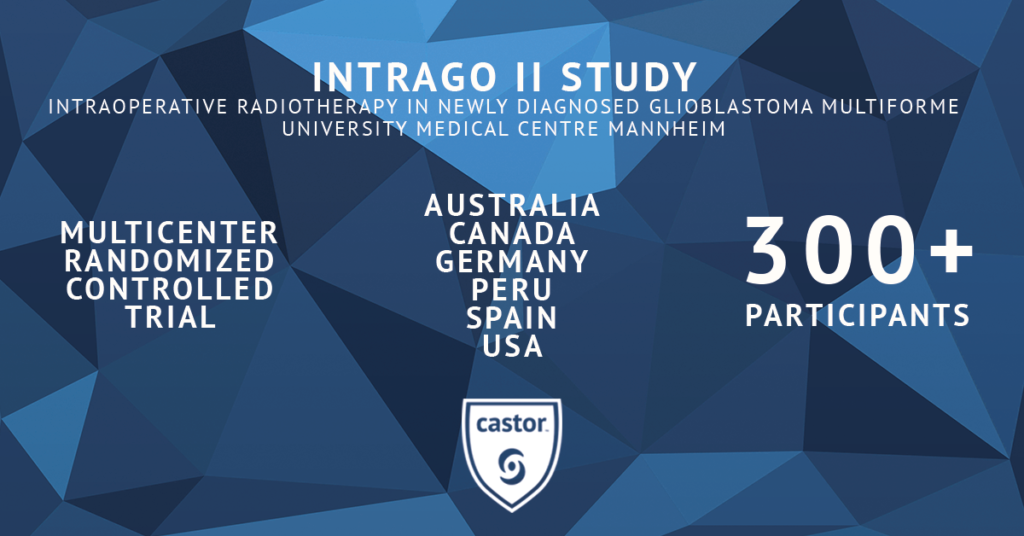
EDC benefit #4: Reduction in time and cost
Why PrevER Trial used Castor to collect and store large datasets.
The PrevER trial investigated the prevalence of Hepatitis C in visitors to the emergency department at Ziekenhuis Oost Limburg. Given a large number of inclusions (3000) and sensitive patient data, initiator Dr. Rob Bielen remarked –
“Had we used Microsoft Excel and Access, it not only would have been impossible to comply with all the data protection requirements, but such a large dataset would have taken days to prepare for analysis.”
– Dr. Rob Bielen, Hasselt University/Ziekenhuis Oost Limburg Genk
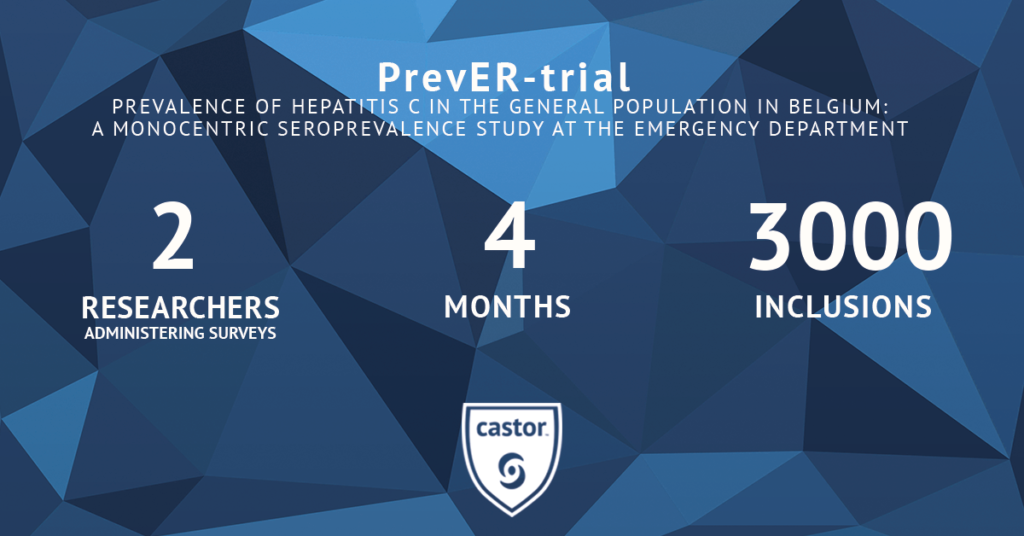
EDC benefit #5: Data can be reused for future research
After publication of the study results, most datasets end up in a drawer and forgotten. When using an EDC system such as Castor, all data is stored in a central database in a standardized format. This allows researchers and their colleagues to easily reuse the data for replication and meta-analyses, to combine datasets, and to test completely new hypotheses.
An electronic data capture platform enables researchers to collect all the study data in one place, whether related to primary or secondary outcomes, patient-reported outcomes, or safety-related data. This includes electronic Case Report Forms (eCRF), electronic Patient Reported Outcomes (ePRO), electronic Clinical Outcome Assessments (eCOA), and Serious Adverse Events (SAE). Castor EDC also helps researchers to easily import legacy data or connect it to other systems (CMS, QMS, device software) through an API.
Additionally, when performing multiple post-market studies with similar end-points, using a single EDC makes it easy to reuse study setups and eCRFs.
EDC benefit #6 Compliance
One of the principal reasons for researchers to switch to an EDC system is compliance. Clinical research is highly regulated, and data, identity, and privacy regulations are becoming increasingly strict.
When capturing data using paper, Microsoft Excel, Microsoft Access, Google Forms or SPSS, it is virtually impossible to comply with all mandatory regulations which exist to protect sensitive medical data. Using a single platform for data management is critical to ensure ICH-E6 – Good Clinical Practice (GCP) and General Data Protection Regulation (GDPR) compliance. Audit trails, user access rights, and data encryption are almost impossible to control using paper copies, Excel, or other legacy systems. For example, GCP requires researchers to keep an audit trail, tracking changes in the data.
In addition, patient data needs to remain unidentifiable and secure. Papers need to be transported and Excel files can be copied and stored on a personal computer, posing major security risks. It is advisable to invest in an EDC system that allows for on-demand data access and reporting for different uses while offering meticulous data security and automatic backups. Castor EDC offers this to its users, complies with GCP and GDPR and has all relevant ISO certifications.
How AMC used Castor to become a leader in data security and compliance.
The Department of Anesthesiology in the Academic Medical Center (AMC) in Amsterdam conducts several research studies. Many were still performed using Microsoft Excel, Google Sheets and Google Forms, a process that was error prone and carried the risk of data leakage. To address this, they secured a department-wide license with Castor EDC, helping to ensure Good Clinical Practice and compliance with patient data privacy laws. They now have a much better overview of the trials running in their department, and significantly reduced their liability risk.
Interested in learning more?
Electronic data capture systems have become essential tools for contract research organizations (CROs), academic researchers as well as medical device, biotech and pharma companies. Globalization and advances in worldwide collaboration in medicine mean that researchers lagging behind in usage of this technology might find it increasingly difficult to keep up.
Castor EDC offers a user-friendly, affordable, and compliant solution for academic researchers and commercial companies. Without having prior technical knowledge, researchers can build a study in just a few clicks using the intuitive Form Builder (simply define the data fields and start collecting high-quality data!). Plus, Castor’s world-class support team is available when you need them.
